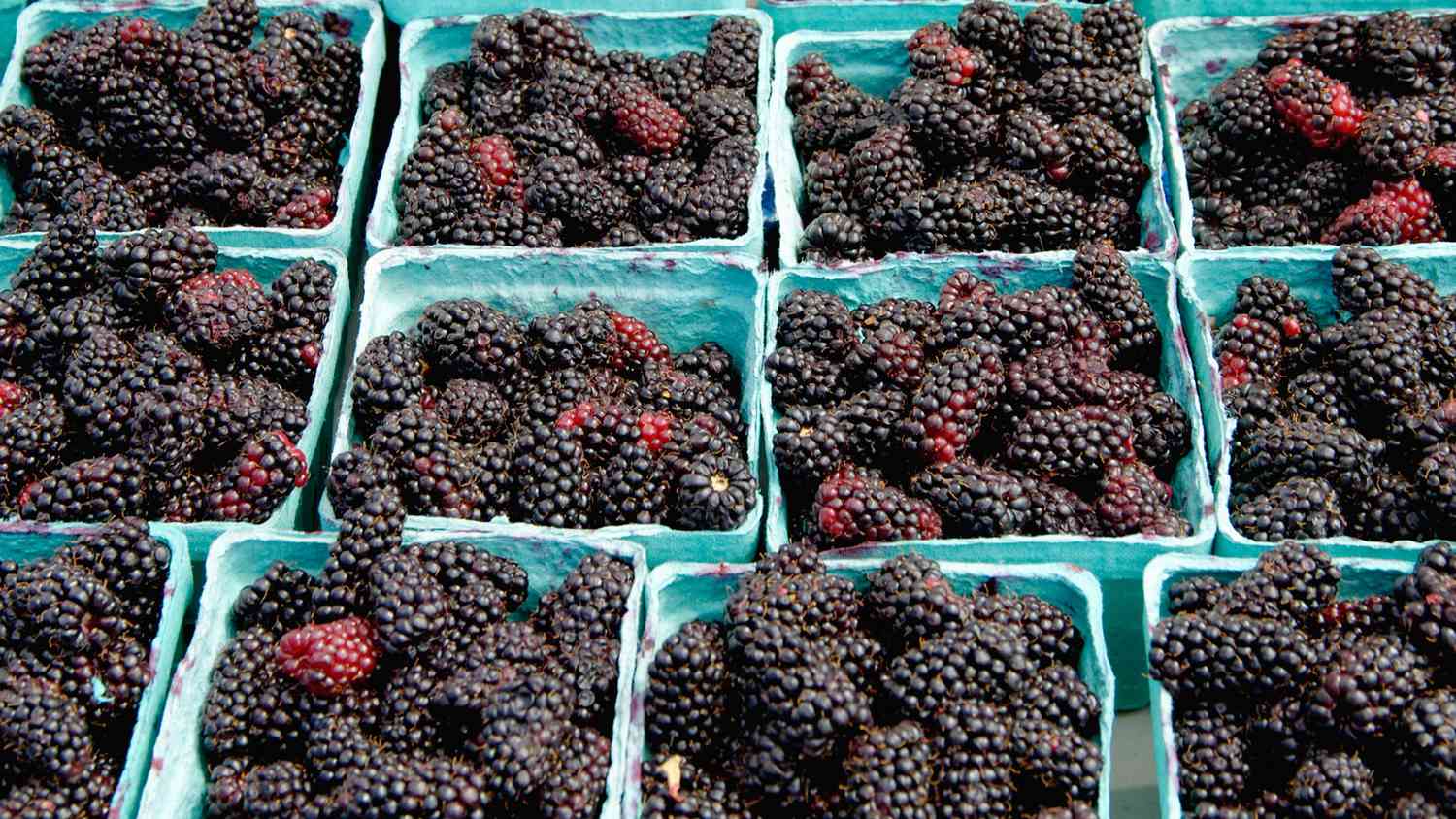
34 interesting facts about Marionberry
- 👁️ 268
The Marionberry, a crown jewel among fruits, is a delightful berry that boasts a deep, complex flavor and a luscious, earthy aroma. This berry is a type of blackberry developed in Oregon, United States, and has since become synonymous with the state’s rich agricultural heritage. Known for its perfect balance of sweetness and tartness, the Marionberry has gained popularity not just in the United States but around the world, adorning tables in various forms from fresh fruit to jams, desserts, and even wines. With its intriguing history and versatile culinary applications, the Marionberry invites a closer look to uncover the secrets behind its succulent charm. Let’s explore some fascinating facts about this beloved berry.
- The Marionberry was developed at Oregon State University by George F. Waldo, in cooperation with the USDA, in 1945.
- It is a cross between the ‘Chehalem’ and ‘Olallie’ blackberries.
- The berry was named after Marion County in Oregon, where it was extensively tested.
- Marionberries are considered the “king of blackberries” due to their complex, rich flavor and superior texture.
- They contain vitamins C and K, fiber, and antioxidants, making them not only delicious but also nutritious.
- Marionberries account for over half of all blackberries produced in Oregon.
- The berries are not only consumed fresh but are also popular ingredients in pies, jams, ice creams, and even savory dishes.
- Marionberry plants are thornless, making them easier to harvest than many other blackberry varieties.
- They have a unique, elongated shape and a deep, dark purple, almost black color when ripe.
- The peak season for Marionberries is in July, making them a summer favorite.
- Unlike many fruits, Marionberries do not continue to ripen once picked; they must be harvested when fully ripe.
- Marionberries have a slightly higher sugar content compared to other blackberries, contributing to their sweetness.
- They are often used in winemaking, lending a fruity and slightly tart flavor to berry wines.
- The development of the Marionberry was part of a berry breeding program that began in the early 20th century.
- Despite their popularity, Marionberries are rarely found fresh outside the Pacific Northwest due to their fragile nature.
- The Marionberry’s deep color is due to anthocyanins, compounds known for their antioxidant properties.
- They require a specific climate to thrive, which is why they are predominantly grown in Oregon.
- Marionberries can be frozen without losing much of their flavor or nutritional value, making them available year-round in frozen form.
- The berry has been incorporated into various artisanal products, including chocolates, sauces, and salad dressings.
- Oregon celebrates the Marionberry and its contribution to the state’s agriculture with festivals and culinary events.
- The first commercial planting of Marionberries was in 1956.
- They are known for their ability to bind with liquid, which makes them particularly good for use in jams and jellies.
- Marionberry pies are a traditional dessert in Oregon, often served with a scoop of vanilla ice cream.
- They have a short shelf life and are best consumed within a few days of picking.
- The berry’s flavor is often described as a mix of blackberry with raspberry and blueberry notes.
- Marionberries are handpicked to ensure the highest quality and to prevent bruising.
- They are used by craft breweries in Oregon to flavor beers and ciders.
- Marionberry cultivation requires careful management to protect against diseases and pests common to blackberries.
- The berry’s vines can grow up to 20 feet in length in a single season.
- Marionberries contribute significantly to Oregon’s economy, especially in the Willamette Valley.
- They have inspired a range of non-food products, including candles and soaps, that aim to capture their distinctive scent.
- Nutritionally, Marionberries are a good source of dietary fiber, contributing to digestive health.
- The berry’s popularity has led to its use in experimental culinary dishes, combining sweet and savory flavors.
- Despite its regional fame, the Marionberry remains relatively unknown to many outside the Pacific Northwest, giving it a mystique that intrigues food enthusiasts.
The Marionberry, with its rich flavor profile and deep Oregonian roots, represents a perfect blend of agricultural innovation and culinary delight. Its development and subsequent rise to fame showcase the importance of dedicated research and local pride in producing a berry that has become a symbol of quality and taste. As a versatile ingredient that continues to inspire chefs and food lovers alike, the Marionberry stands as a testament to the potential for regional specialties to gain international acclaim. Its story is a reminder of the simple pleasures that come from the land, inviting us to explore and appreciate the bounty of nature’s offerings.
The Marionberry, a crown jewel among fruits, is a delightful berry that boasts a deep, complex flavor and a luscious, earthy aroma. This berry is a type of blackberry developed in Oregon, United States, and has since become synonymous with the state’s rich agricultural heritage. Known for its perfect balance…